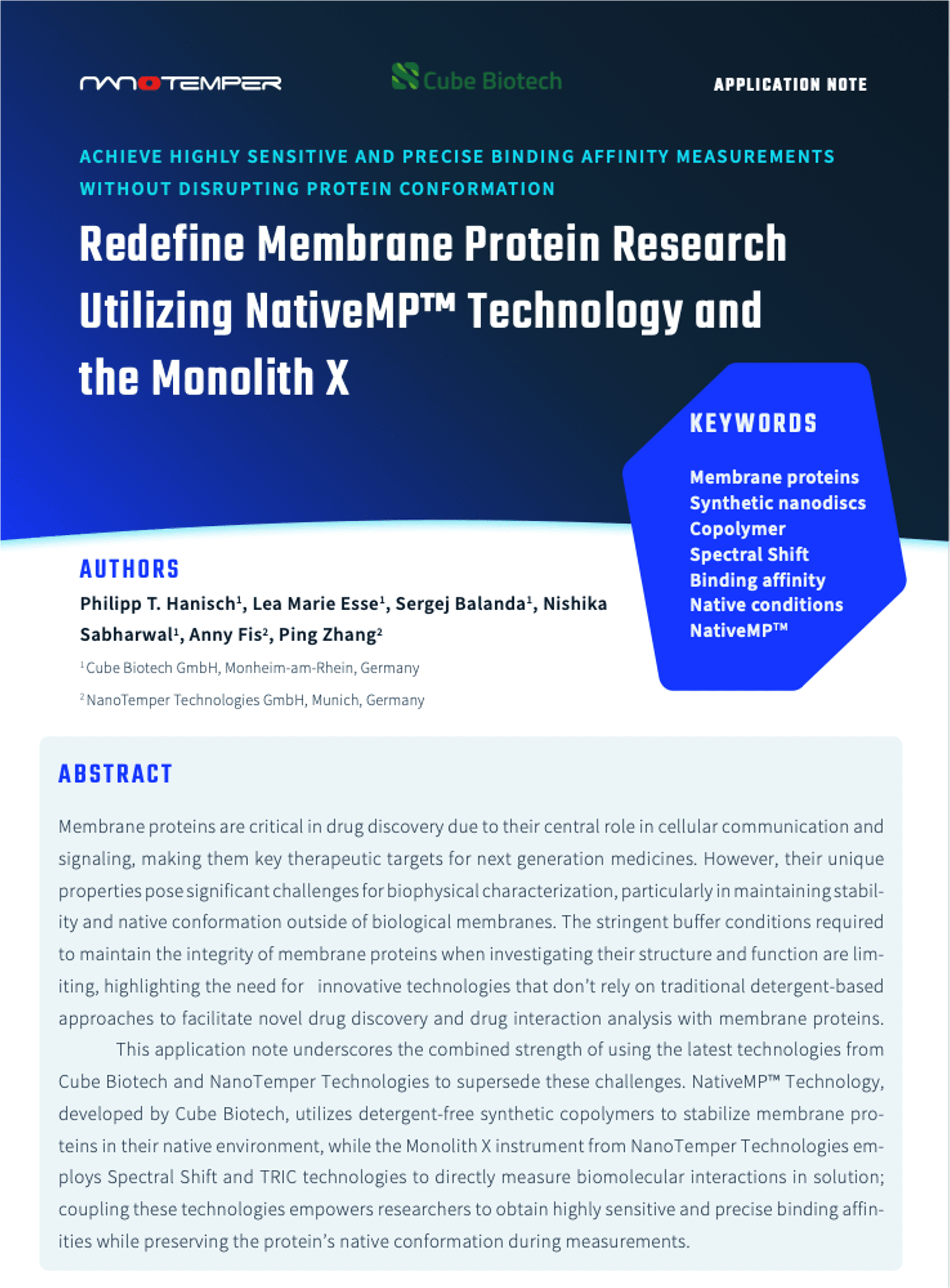Flayhan, A., Mertens, H., Ural-Blimke, Y., et al.
Structure 2018, vol: 26(2) doi: 10.1016/j.str.2018.01.007
Abstract
Saposin-derived lipid nanoparticles (SapNPs) are a new alternative tool for membrane protein reconstitution. Here we demonstrate the potential and advantages of SapNPs. We show that SapA has the lowest lipid specificity for SapNP formation. These nanoparticles are modular and offer a tunable range of size and composition depending on the stoichiometric ratio of lipid and saposin components. They are stable and exhibit features typical of lipid-bilayer systems. Our data suggest that SapNPs are versatile and can adapt to membrane proteins of various sizes and architectures. Using SapA and various types of lipids we could reconstitute membrane proteins of different transmembrane cross-sectional areas (from 14 to 56 transmembrane α helices). SapNP-reconstituted proteins bound their respective ligands and were more heat stable compared with the detergent-solubilized form. Moreover, SapNPs encircle membrane proteins in a compact way, allowing structural investigations of small membrane proteins in a detergent-free environment using small-angle X-ray scattering.
Topics: Prometheus, nanoDSF, Monolith, MST, Membrane Proteins, Publications










